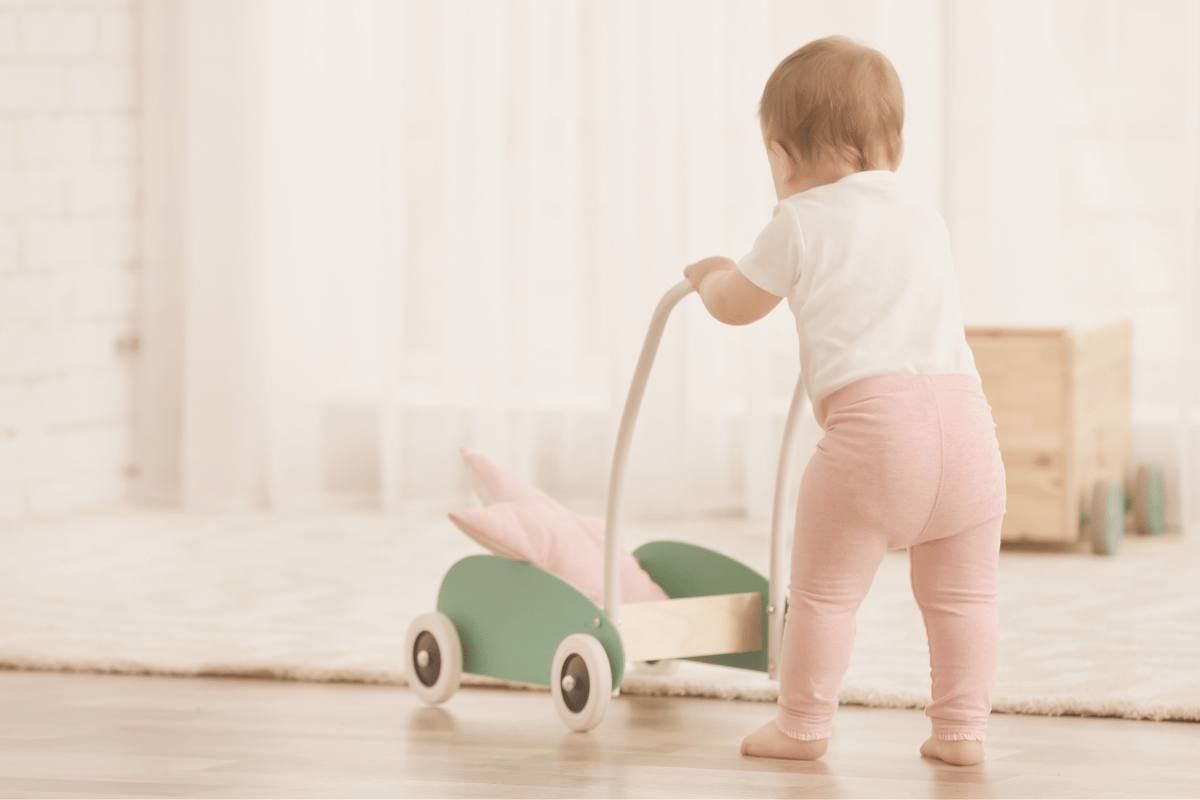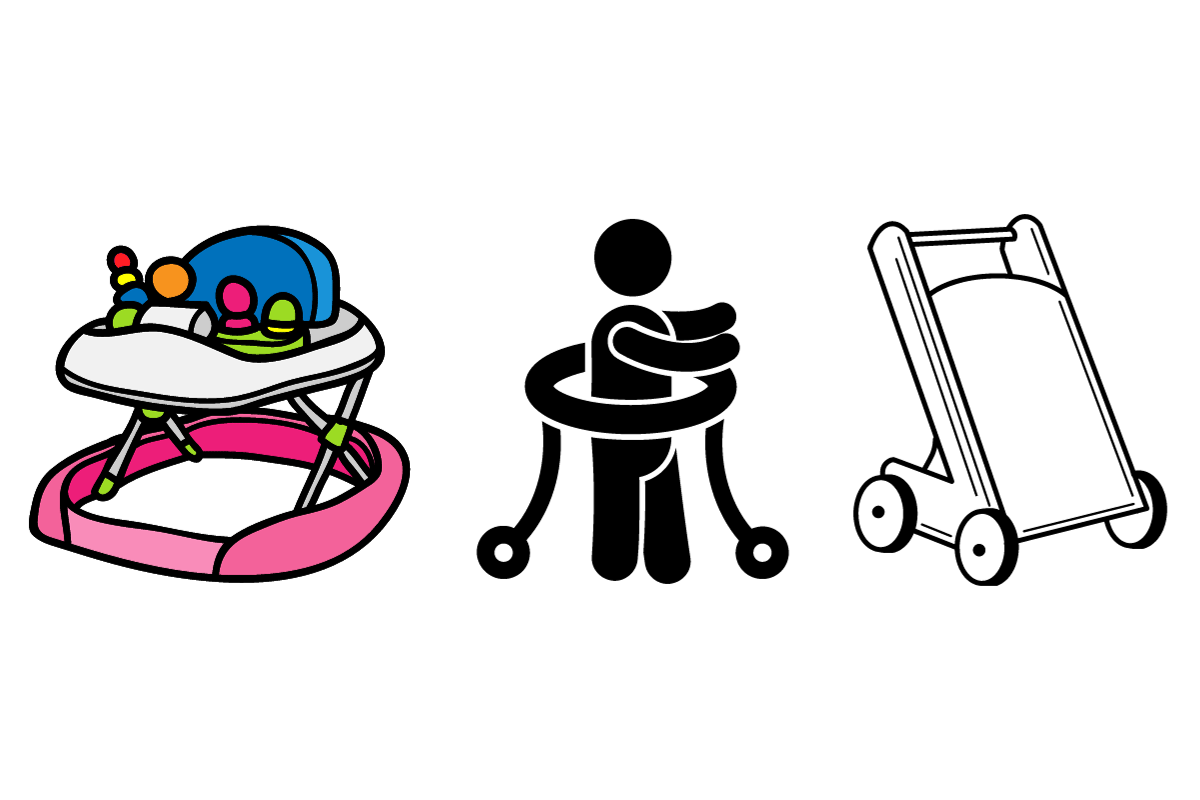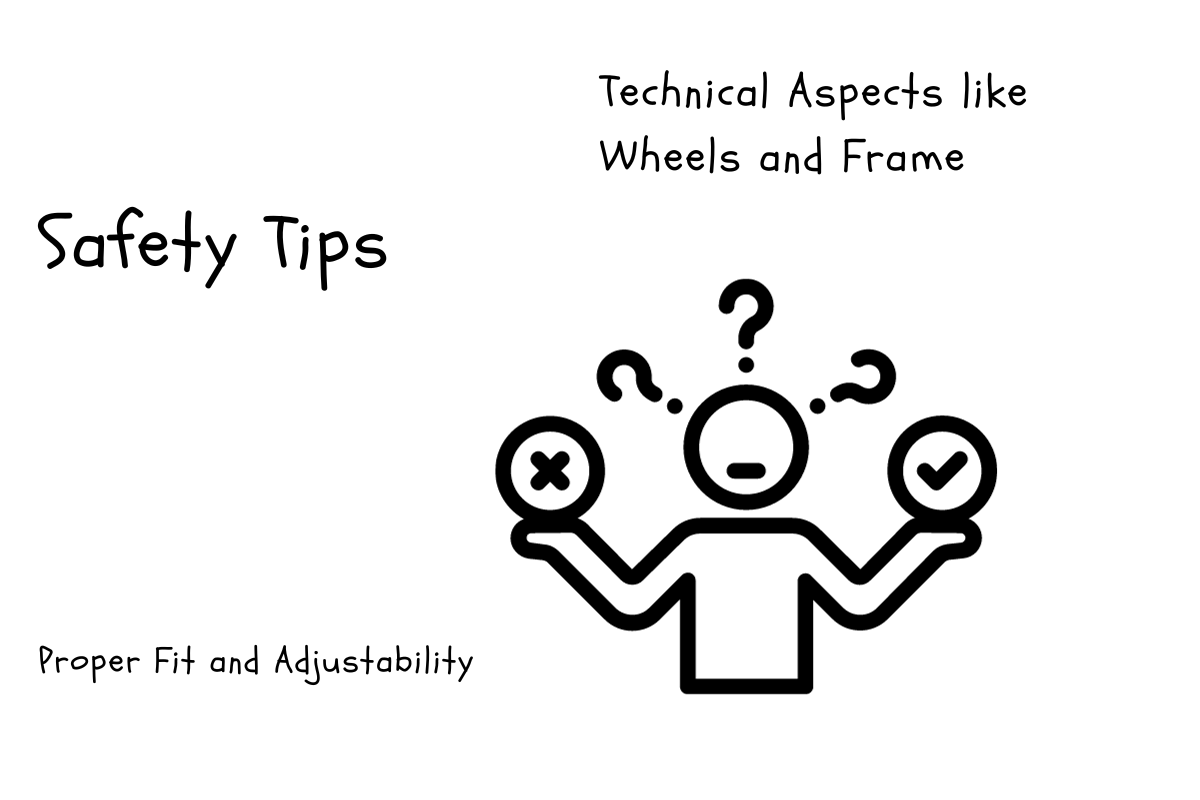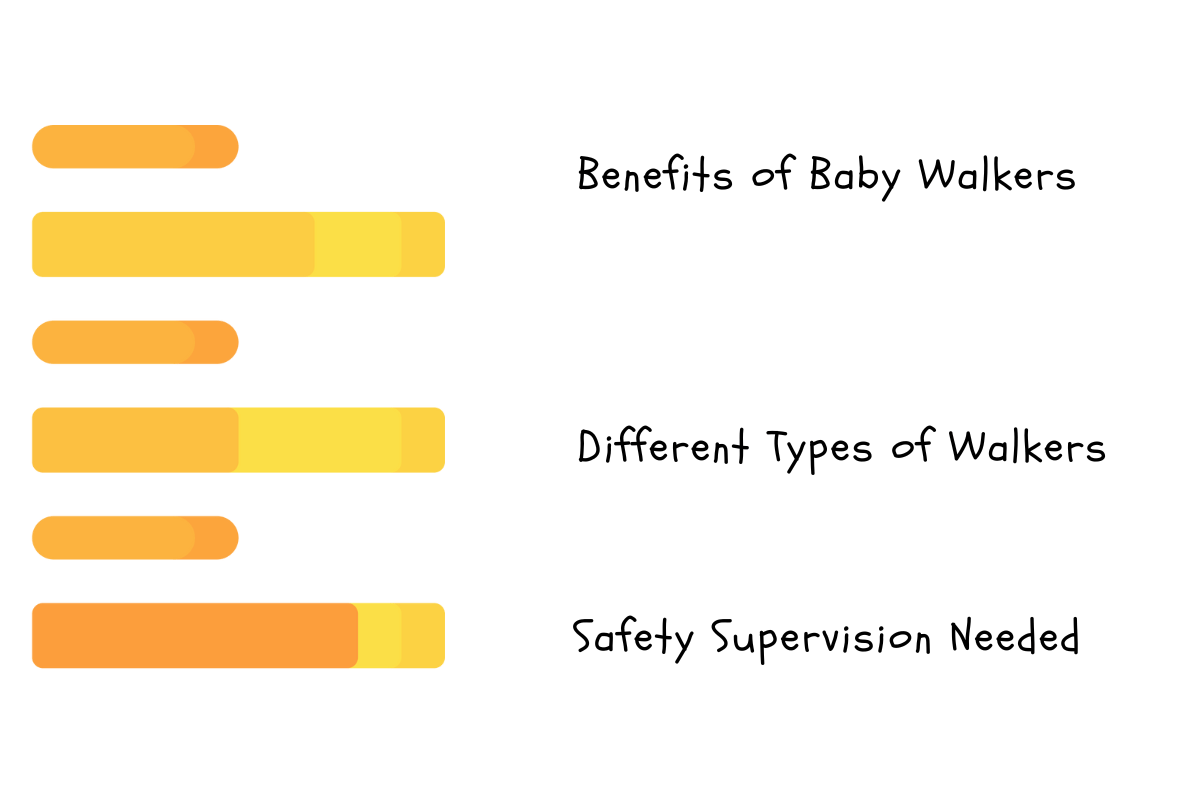How To Choose a Baby Walker for Baby’s Best Freedom 2025?

Choosing the right baby walker can be tricky with so many options. Figuring out the best baby walkers that fit your baby’s first steps might feel like a puzzle.
From safety features and types of baby walkers to your child’s development stages, we will go through all these to find the best one for your baby to make an easy decision. Let’s explore the important things to consider when picking the best baby walker.
We will discuss the essential factors for selecting the ideal baby walker, including baby walker safety tips to ensure a secure experience for your child and baby walker exercises that encourage growth.
Ready to find the perfect walker for your baby’s first steps?
Let’s dive in together, making each step count for your little one’s joy and development. Because when it comes to your baby’s first strides, every choice matters.
Key Takeaways – Choose a Baby Walker
- Prioritize safety features like a sturdy, non-slip base and protective bumpers when choosing a baby walker. This prevents falls and creates a secure environment for your child.
- Match the type of walker to your child’s age and developmental stage. Choose between stationary, rolling, push, or sit-in walkers based on their mobility skills.
- Ensure proper height adjustability and fit so the walker provides optimal support as your baby grows. Proper fit enhances comfort and confidence.
Safety Features to Look For

When choosing a baby walker, focus on essential safety features. Opt for sturdy wheel designs to prevent tipping, ensuring a stable experience for your baby’s first steps. An anti-slip base provides extra stability on different surfaces, preventing slips or falls.
Protective bumpers safeguard both your home and your baby during their explorations. Adjustable height settings accommodate your baby’s growth, offering the right support. Check for safety certifications to ensure the walker meets the necessary standards.
A robust frame and suspension system enhance durability and stability. Prioritize smooth, stable wheels for a secure and enjoyable walking journey for your little one.
Wheel Designs to Prevent Tipping
Choosing a baby walker with the right wheel design is important for your little one’s safety. Look for sturdy and well-balanced wheels to prevent tipping. This ensures many walkers are a stable and secure environment for your baby as they take those initial steps.
Anti-Slip Base
An anti-slip base is a must-have feature for a baby walker. It provides extra stability and prevents accidents on smooth surfaces. With this feature, you can confidently let your baby explore, knowing that the walker stays firmly in place, minimizing the risk of slips or falls.
Protective Bumpers
Protective bumpers add an extra layer of safety to your baby’s walker. They cushion any impact, preventing scratches on furniture and walls. This feature safeguards your home and ensures that your baby’s journey in the walker is smooth and free from collisions.
Adjustable Height
The ability to adjust the height of the baby walker is essential for catering to your baby’s growth. A walker with adjustable height settings ensures that your baby’s feet touch the ground comfortably, providing the right support for their early attempts at walking.
Safety Certifications
When choosing a baby walker, always check for safety certifications. This ensures that the walker meets the necessary standards for your baby’s well-being. Opting for a certified baby walker gives you peace of mind, knowing that it has undergone rigorous testing for safety.
Sturdy Frame and Suspension
A sturdy frame and suspension system are the backbone of a reliable baby walker. They contribute to the overall durability and stability of the best baby walker, making it a safe and long-lasting choice for your little one’s exploration and play.
Smooth, Stable Wheels
Smooth and stable wheels are essential for a seamless walking experience for kids. They allow your baby to move effortlessly on different surfaces without jarring or wobbling. Prioritize walkers with wheels that provide a smooth ride, ensuring your baby’s comfort and enjoyment.
Matching Development Stages with Walker Types

Choosing the right walker involves aligning it with your baby’s development stage. Consider their age, emerging skills, and mobility level to find the most suitable type.
Whether deciding between stationary and rolling walkers, choosing a push or sit-in walker, or opting for a convertible/multimode walker, understanding your baby’s needs ensures the walker supports their growth and exploration effectively.
Tailoring the walker to your baby or child’s age developmental milestones ensures a seamless and beneficial experience for their early steps.
Explore various options by comparing baby walker vs. bouncer to understand the differences and benefits for your baby’s development.
Age Guidelines and Skills Needed
Understanding the age guidelines and required skills for using a baby walker is essential. Your baby’s development stage determines the type of walker suitable for their needs.
Knowing when your baby is ready for a walker and understanding their emerging skills will help you make an informed choice. It’s not just about the age; it’s about aligning the walker with your baby’s developmental milestones.
Stationary vs. Rolling Walkers
Choosing between a stationary and a rolling activity walker involves considering your baby’s level of mobility. Stationary walkers provide stability, ideal for beginners while rolling walkers offer more independence for those ready to explore.
Deciding which type of activity walker aligns with your baby’s current stage ensures a walker that enhances their mobility at the right pace.
Push vs. Sit-in Walkers
The decision between a push walker and a sit-in walker depends on your baby or infant’s preference and stage of development. A push walker encourages walking with support, aiding balance and coordination.
On the other hand, sit-in walkers offer comfortable seats for babies not yet ready to stand independently. Recognizing your baby’s comfort and abilities guides you towards the most suitable choice.
Convertible/Multimode Walkers
Opting for a convertible or multimode walker provides versatility as your baby grows. These walkers adapt to different stages of development, offering a sit-in option for early stages and converting to a push walker for later exploration.
This flexibility ensures your baby continues to benefit from the walker’s features as they progress to different heights in their developmental journey.
Buying Considerations

When exploring the options for a baby walker, it’s essential to focus on key considerations that directly impact your baby’s safety and comfort. Prioritize safety by following significant tips, such as opting for non-slip pads and sturdy construction, while closely supervising your baby during use.
Delve into the technical aspects, understanding the importance of smooth-rolling wheels and a durable frame. Ensure a proper fit and adjustability for your baby’s height to enhance their overall experience.
Most importantly, prioritize critical safety features like non-slip materials, a wide base, and friction strips.
Choosing a baby walker becomes more than just a purchase – it becomes a strategic investment in creating a safe and nurturing environment for your baby’s early steps and exploration.
Significant Safety Tips
Safety considerations take center stage when selecting a baby walker. Ensure your baby’s well-being with these significant safety tips. Opt for walkers with non-slip pads and sturdy construction to establish a secure environment.
Close supervision is important when your baby is using the walker, particularly on flat surfaces or near stairs. Prioritize safety standards and choose a walker with engaging features and a reliable braking system. This ensures a safe environment and an enjoyable experience for your little one.
Technical Aspects like Wheels and Frame
Understanding the technical aspects of a baby walker is pivotal for making an informed decision. Focus on key components like wheels and frames directly influencing the walker’s functionality.
Choose a walker with smooth-rolling wheels to provide a comfortable ride for your baby. Assess the sturdiness of the frame, as durability is a critical factor.
Delve into these technical details to select a walker that supports your baby’s development and withstands the test of time.
Proper Fit and Adjustability
Ensuring a proper fit and adjustability in a baby walker is essential for your baby’s comfort and safety. Choose a walker that can be adjusted to match your baby’s height, offering optimal support during their early attempts at walking.
A proper fit contributes to your baby feeling secure and confident in their exploration, fostering a positive experience with the walker.
Prioritize Critical Safety Features
Prioritizing critical safety features is fundamental in the baby walker buying process. Look for non-slip materials, a wide base, and friction strips to enhance stability. Choose walkers that provide the right support for your baby’s legs, preventing any discomfort.
By prioritizing these safety features, you’re not merely selecting a walker – you’re investing in your baby’s safety and creating an environment that nurtures their development.
Additional Research Topics

When venturing into the realm of baby walkers, it’s essential to explore additional research topics. Investigating the benefits, understanding the various types, ensuring safety supervision, and checking online reviews are crucial.
This exploration provides valuable insights for parents, aiding them in making informed decisions when selecting the perfect baby walker. Researching these topics helps comprehend popular baby walkers’ landscape and contributes to a more confident and well-informed parenting journey.
Benefits of Baby Walkers
Baby walkers offer numerous advantages, benefiting both parents and babies. They facilitate your baby’s initial steps and foster a sense of independence. The inclusion of interactive toys keeps your baby engaged and supports developmental growth.
As parents, you gain from a secure environment where your baby can explore safely. Understanding these benefits helps you make an informed decision about integrating a baby walker and interactive toys into your parenting routine.
Different Types of Walkers
The market presents a diverse array of baby walkers catering to various needs. Whether you seek a walker for your baby girl or one with sturdy frames and interactive toy features, different types are available.
Each type comes with unique features and benefits, contributing to the joy, fun, and developmental support of your little one.
Safety Supervision Needed
Safety is paramount when using baby walkers. Close supervision, especially on flat surfaces and near stairs, ensures a secure environment for your baby’s exploration.
The right support, non-slip materials, and adherence to safety standards contribute to a safe space for your baby. Understanding the significance of safety supervision guarantees a positive baby-safe move experience for you and your baby.
Summary
Selecting a baby or child walker involves prioritizing safety, exploring diverse types, and understanding developmental needs.
Choose a walker supporting your baby or child’s first steps and aligning with your parenting style.
Take a step toward confident parenting and explore the joy of watching your little ones take their first steps.
Frequently Asked Questions
What Type of Walker is Best for Babies?
The best baby walker is a sit-in walker with a wide base, non-slip pads, and adjustable height, providing support for toddlers on their first steps.
At What Month Can a Baby Use a Walker?
Babies can start using a walker around 6-8 months when they show signs of sitting up and trying to stand.
Do Pediatricians Recommend Baby Walkers?
Pediatricians generally discourage baby walkers due to safety concerns and suggest alternative methods for supporting a baby’s development.
Are Baby Push Walkers Bad for Development?
Baby push walkers are not inherently bad, but prolonged use may affect children’s natural walking development. It’s recommended to use them under supervision and in moderation.
What is the Difference Between a Push Walker and a Walker?
A push walker requires a baby to push it from behind while learning to walk, while a sit-in walker allows the baby to sit inside and move around using their feet, promoting a different type of mobility.





